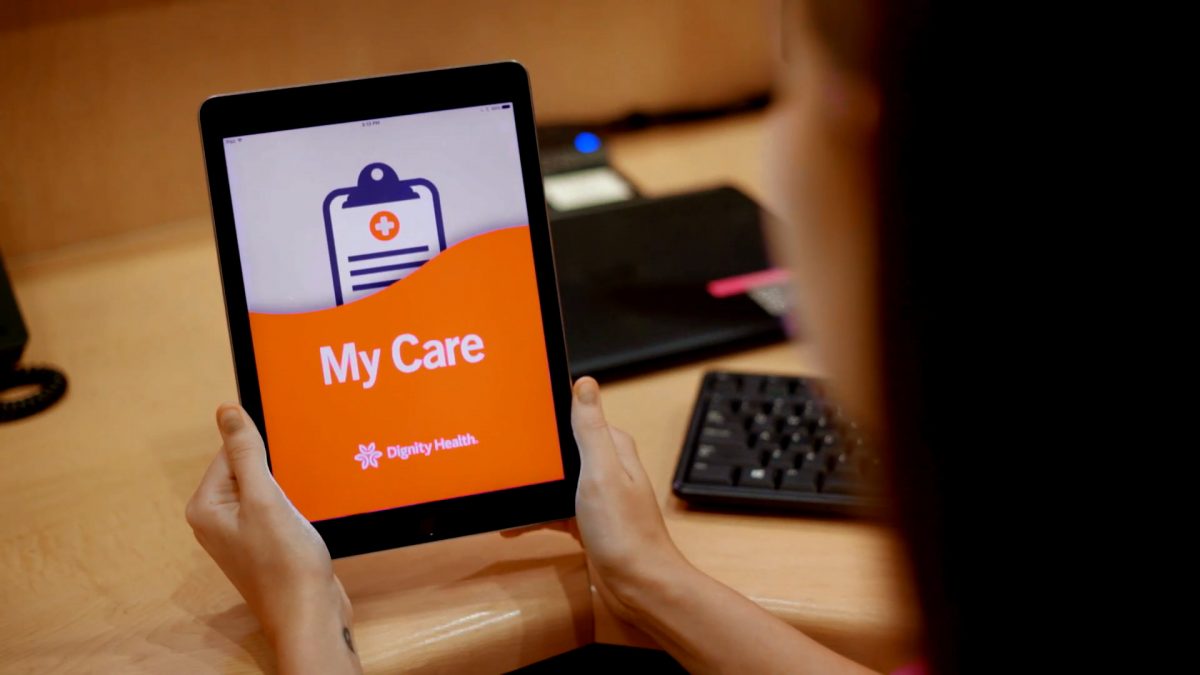Portal technology refers to the system in which there is a central portal, which acts as a gateway to the functionality of the system. It is a user-friendly way of getting into a single point of entry and helps the users in finding what they are looking for.
Portal technology in healthcare means convenient online patients’ access to their health information. Their personal information is present on websites which the patients can access via secure usernames and passwords.
The health information which can be provided with the help of this technology includes:
- Recent doctor visits
- Discharge summaries
- Medications
- Immunizations
- Allergies
- Lab results
Some portals also provide other facilities as well such as:
- Messaging the doctor: patients can ask for information regarding their present complaints, follow-ups, medication dosages, any side effects, any investigations etc.
- Request prescription refills: this is a very useful feature as patients don’t have to visit the doctor’s clinic for refilling the prescription. They can request for it through these online portals.
- Schedule non-urgent appointments: in non-emergency situations, one can schedule their appointment through these portals by looking at different available doctors. The profile of these doctors is mentioned on the websites including their contact information.
- Check benefits and coverage.
- Update contact information.
- Make payments.
- Download and complete forms.
Portal is a term synonym with the gateway. Portal technologies are an SBA-certified small business providing digital transformation services for enterprise and digital services for systems. Their aim is to focus on vision, schema, strategy, construction, engineering, process, and development for the public sector and commercial customers with a cooperative and revolutionary service delivery model.
At the portal, we can get to know about our clients which insinuates towards the accurate solutions for our business. This is also a way through which we can work together with the clients. In this manner, we can get a high level of service.
A large number of access providers provide portals to the web for their own users. Most of the portals have acquired the yahoo style of content categories with the text-insensitive, faster loading page that user finds easy and comfortable to use.
Services offered by the portal:
- Directory of the website
- Facility to search the other sites
- Phone
- Weather information
- News
- Stock quotes.
- Map information
- Community forum
Patient portal improves patient session:
Patient portals are a way through which the patient can interact with the doctor. The patient is able to brief its state and the doctor can guide him.
What are patient portals?
The patient portal is the online website that is connected to HER. Its main aim is to focus on the patient’s access to health data. These tools give the patients a look into various data points like:
- Lab results.
- Doctor notes.
- Patient health history.
- Discharge dates.
- immunizations.
Not all the patients are created equal. Some portals only allow viewing the demography and medical history data while others provide real-time lab results updates.
The data available through portal depends on the portal vendor and also on the healthcare facility. The patient portal provides the patient with the window through which they can view their health data.
Key features:
- Online Billing.
- Online messaging.
- Prescription
How common is the patient portal?
Patient portals are becoming popular with the passage of time in the healthcare industry. According to the national coordinator for health information technology, 64% of the hospitals gave their access to view, download and transmit their health data in 2014. 51% had the ability to secure message with their patients.
Patient portal services:
- Set reminders and calls.
- Send and receive messages.
- Provide appointment.
- Lab results.
- Share clinical notes.
- Record diagnoses.
- Record medical condition list.
- Record vaccinations.
- Approve repeat scripts.
Patient portal benefits:
- No Wastage of time.
- Global availability.
- A convenient way to ask questions.
- SMS facility.
- Improve the clinical outcomes.
- Optimizes workflow.
- A better relationship between patient and doctor.
Ways to encourage patient portal use:
- Register patients in your office.
- Educate patients on portal benefits.
- Publicize your portal.
- Share select clinical data.
- Ask a question for feedback.
Future of portal technology
Most of the patients especially the aged are interested in using a patient portal irrespective of health literacy level, previous patient portal adoption, or experience navigating health information on the web.
Moreover, growing evidence indicates that patient involvement improves health outcomes and also reduces health care costs which have fueled health providers. Other than this, portal technology provides the primary access point for personal health information and patient-provider communication.
Remote use of medical services in the form of E-visits may soon become one of the most commonly used options of patient portals. The advantage it provides is especially for patients who live in far-flung areas from clinical services. Internet sessions would obviously be much cheaper and more convenient for the patients than to travel a long distance, especially for simple questions or minor medical complaints.
Providing a route that does not require in-person patient visits to a clinic may potentially benefit both patients and providers. E-visits, with the proper functionality, also allow the patient to update their information about allergies, vital signs, and any presenting complaints.
Stay tuned for more updates!
